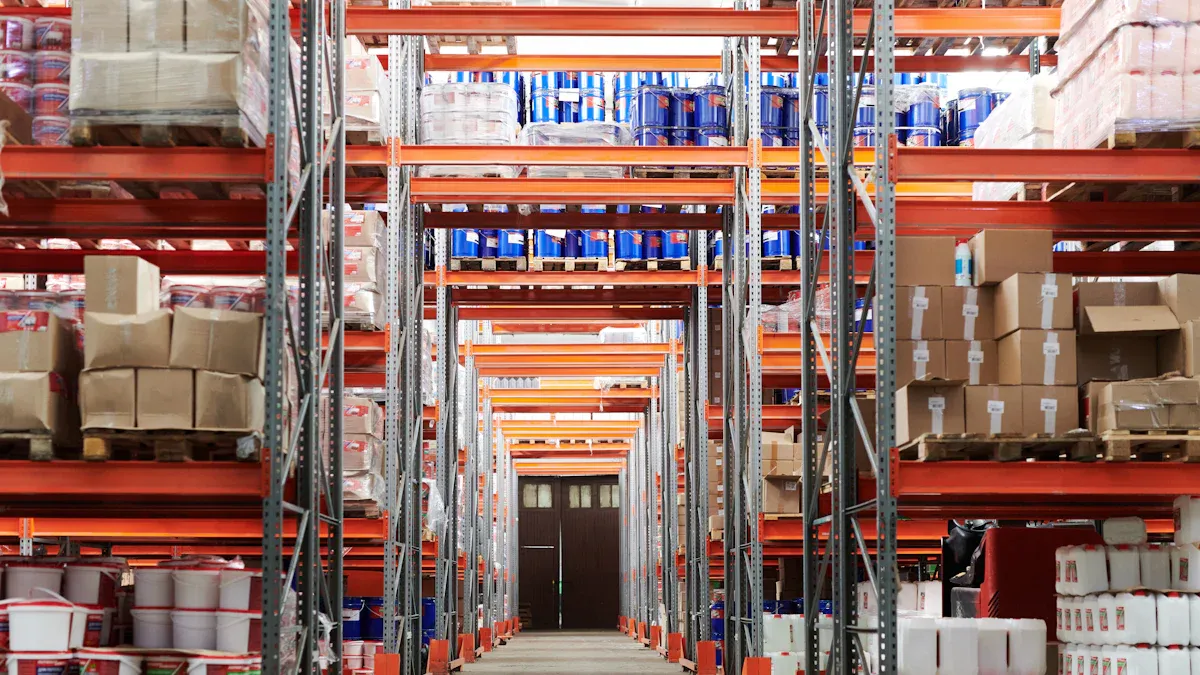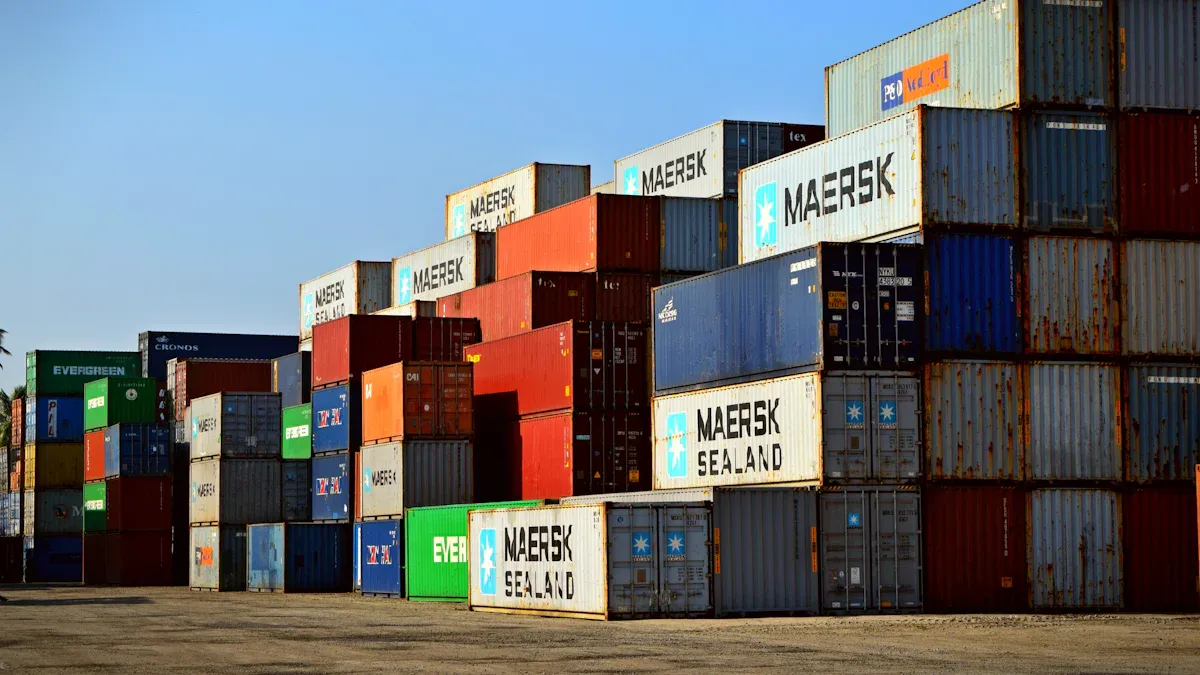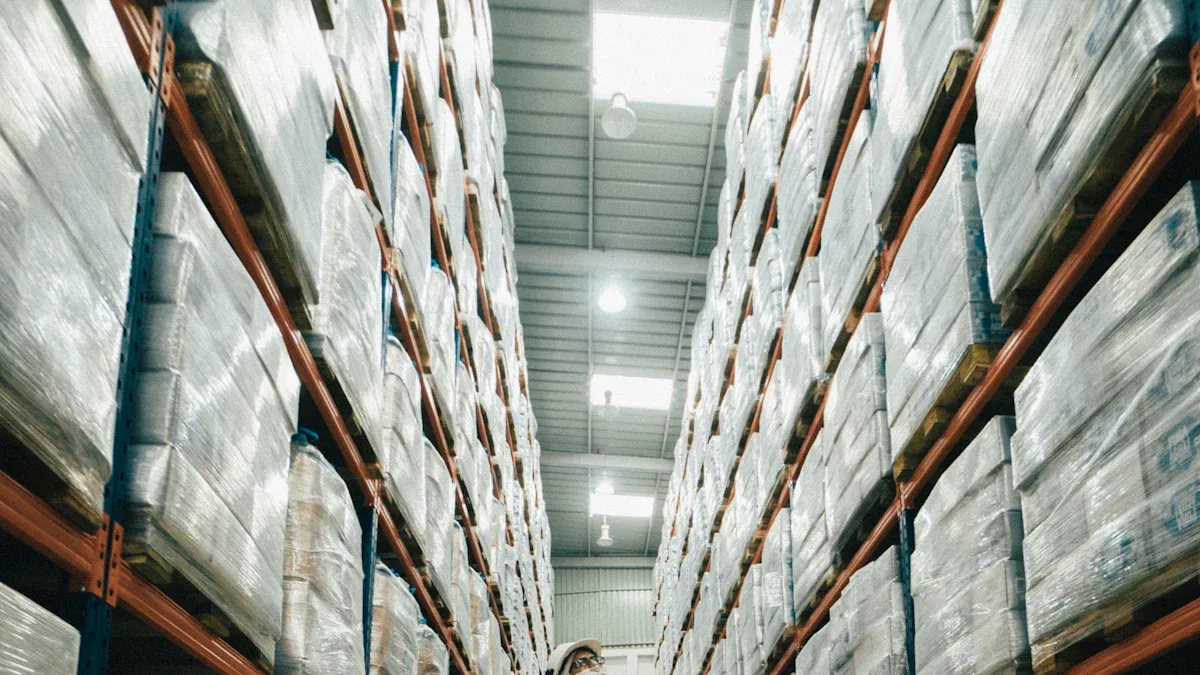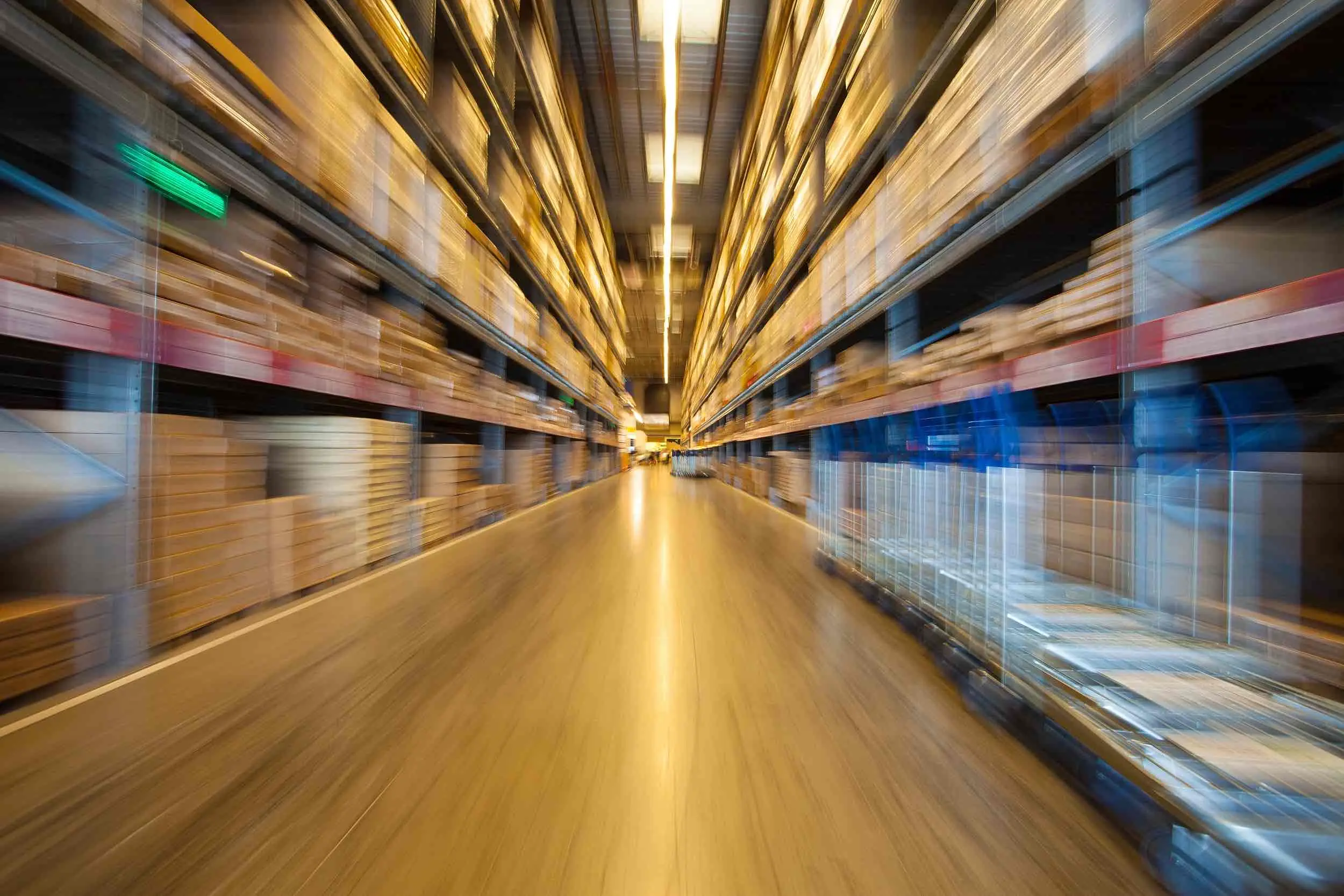The Importance of Logistics in Achieving Supply Chain Efficiency

Logistics supply chain management is key to making supply chains work well. It manages resources, transport, and stock to simplify tasks. Companies study past data to avoid delays and fix stock issues. This stops problems before they happen. Live data helps send the right item to the right spot, keeping customers happy. JUSDA, a top logistics supply chain company, uses smart tech to improve supply chains and ensure smooth work everywhere.
Key Takeaways
Good logistics planning helps save money by improving shipping and storage.
Delivering orders on time makes customers happy and builds trust.
Tools like AI and live data help make better choices and improve logistics.
Key Components of Logistics in Supply Chain Management

Transportation: Getting Products to the Right Place on Time
Transportation is a key part of logistics. It moves products from suppliers to customers quickly. Delivering on time keeps customers happy. Tools like real-time data and IoT help track shipments and vehicles. These tools let you make smart choices and work better. Predictive analytics also helps by keeping vehicles in good shape. This reduces delays in getting products delivered.
Planning the best routes is very important too. It uses data to find faster paths, saving time and improving deliveries. Traffic systems also help by avoiding busy roads. These tools make sure your supply chain stays fast and ready for changes.
Trend | Description |
|---|---|
Tracks shipments and vehicles, helping with better decisions. | |
Predictive Analytics | Keeps vehicles in good condition, avoiding delivery delays. |
Finds faster routes, saving time and improving deliveries. | |
Traffic Management | Avoids traffic jams, ensuring deliveries are on time. |
Focusing on transportation ensures products arrive at the right place on time. This improves logistics and builds trust with customers.
Warehousing Solutions by JUSDA: Better Inventory Management
Warehousing is important for managing supply chains. It helps store and organize products well. JUSDA offers smart warehouse solutions for different business needs. With over 2.5 million square meters of space, JUSDA keeps inventory neat and easy to access.
JUSDA's eVMI system tracks inventory in real time. This stops overstocking and running out of stock. It helps plan better by showing what is needed. You can match production to demand, saving money and working more efficiently. JUSDA also builds strong supplier relationships with clear inventory management.
Performance Statistic | Description |
|---|---|
Tracks inventory to avoid too much or too little stock. | |
Improved Forecasting | Shows demand clearly for better production planning. |
Cost Savings | Cuts storage costs and extra inventory. |
Stronger Partnerships | Builds trust with suppliers through clear inventory tracking. |
Increased Efficiency | Makes inventory management easier for your team. |
JUSDA uses advanced technology to improve warehouse efficiency. These tools help control inventory, cut costs, and provide reliable service.
Order Fulfillment: Delivering Orders Correctly and On Time
Order fulfillment is the last step in logistics. It makes sure customers get their orders right and on time. Smooth order processes make customers happy and build trust. JUSDA focuses on reducing mistakes and speeding up order handling. This helps manage more orders with fewer errors.
Real-time tracking is very helpful in order fulfillment. It avoids running out of stock or having too much. Delivering the right order on time improves your reputation and keeps customers loyal. JUSDA's systems also lower costs from returns and re-shipping, saving money.
Benefit | Description |
|---|---|
Delivering correct orders on time makes customers happy and builds trust. | |
Increased Efficiency | Fewer mistakes and faster processing help handle more orders. |
Cost Savings | Reducing errors saves money on returns and re-shipping. |
Better Inventory Management | Tracks stock levels to avoid shortages or extra inventory. |
Enhanced Reputation | Meeting customer needs builds loyalty and boosts sales. |
Focusing on order fulfillment helps meet customer needs easily. This improves logistics and strengthens your market position.
Benefits of Good Logistics for Supply Chain Success
Saving Money with Better Logistics Processes
Good logistics management helps cut costs in your supply chain. By improving transportation, inventory, and planning, you save money. For example, smart route planning finds faster delivery paths. This lowers transport costs by 5-30% and avoids delays.
Managing inventory well also saves money. Using smart methods, you can keep 15-30% less stock but still serve customers better. Better planning improves accuracy by 10%, cutting extra stock by 5%. Companies using these methods reduce mistakes by 25-45% and lower inventory costs by 10-15%.
Focusing on better logistics saves money and boosts efficiency. This lets you use resources wisely and grow your business.
Happier Customers with On-Time Deliveries
On-time deliveries build trust and loyalty with customers. Meeting deadlines and sending correct orders makes customers happy. Scores like CSAT and NPS show how much customers like your service. Higher scores mean they trust and recommend your business.
Easy-to-use systems also help customers. The CES score shows how simple it is for them to shop. A higher CES means a smoother experience, improving your reputation.
By focusing on reliable deliveries, you meet customer needs. This gives you an edge over others and helps your business grow.
Business Growth with Flexible Logistics Systems
Flexible logistics systems help handle more work without losing quality. Tools like automation and safety-stock systems keep inventory at the right levels. Smart routes and better packaging make shipping faster and cheaper.
Streamlined processes let you do more with fewer resources. This improves efficiency and helps your business grow. Faster deliveries and live tracking also make customers happier.
Feature | Benefit |
|---|---|
Smarter Inventory | Automation and safety-stock tools keep stock levels just right. |
Faster Shipping | Smart routes and good packaging speed up deliveries and cut costs. |
Higher Efficiency | Better processes let you handle more work with less effort. |
Improved Customer Experience | Quick deliveries and tracking make customers happy. |
Cost Savings and Growth | Efficient systems save money and boost sales. |
Flexible logistics systems improve efficiency and prepare for future challenges. Using these tools helps your business grow and stay competitive.
Strategies for Improving Logistics in Supply Chain Management
Using Technology to Make Logistics Better
Technology helps make logistics work smarter and faster. Tools like IoT and AI improve tracking and decision-making. Real-time tracking shows where shipments and stock are, keeping things running smoothly. Predictive analytics helps spot problems early, making transport reliable.
You can use key metrics to check how well technology works. These include:
Metric Type | Description |
|---|---|
Reliability | Checks how often promises, like on-time deliveries, are kept. |
Efficiency | Looks at costs, like how much it takes to sell goods. |
Asset Management Efficiency | Measures how well tools and resources are used. |
By focusing on these metrics, you can save money, improve processes, and make customers happy.
Teaming Up with Third-Party Logistics Companies
Working with third-party logistics companies makes your logistics stronger. These partners bring special skills and tools to help you grow. For example, Starbucks worked with Conservation International to get eco-friendly coffee. This made their brand better and customers more loyal.
Third-party companies give you flexible transport and storage options. They are good at organizing, so deliveries are on time and stock is managed well. Strong partnerships also help you handle market changes, keeping your logistics plans strong and useful.
Planning Ahead for Demand and Resources
Guessing demand correctly is key to good logistics. It helps you use resources wisely and avoid too much or too little stock. Things that affect demand include:
What customers want and market trends.
The economy and its changes.
New technology.
Surprises like natural disasters.
Busy seasons and holidays.
What your competitors are doing.
By knowing these factors, you can match your logistics to what the market needs. This saves money, makes transport better, and keeps customers happy. Good planning also helps your supply chain work together to meet demand easily.
The Future of Logistics in Supply Chain Management

Automation and Robotics in Logistics Supply Chain Operations
Robots are changing how logistics work. They help with sorting, packing, and picking orders. This makes work faster and reduces mistakes. For example, Amazon uses robots to save 25% on order costs. By 2030, they may save $10 billion yearly. Robots work all the time, making deliveries quicker and more efficient. They also make workplaces safer by doing risky jobs.
Robots improve accuracy and do tasks the same way every time. Automated warehouses use robots to save space and manage stock better. This avoids delays and keeps items ready to ship. Using robots helps you prepare for future challenges, save money, and offer better service.
The Role of JUSDA in Advancing Green Logistics Initiatives
Green logistics is becoming very important. JUSDA leads by using eco-friendly methods. They cut carbon emissions with better transport routes and energy-saving warehouses. JUSDA also uses less wasteful packaging and reduces trash, helping businesses go green.
JUSDA’s green methods help the planet and save money. Choosing eco-friendly ways matches global trends and improves your brand’s image. Their solutions lower costs and make your supply chain more sustainable.
The Rise of AI and Data-Driven Logistics Solutions
AI is making logistics smarter and more accurate. It cuts mistakes, uses resources better, and gives real-time updates. For example, AI forecasting reduces errors by up to 50%. It also lowers stockouts by 65% and warehouse costs by 10-40%. Walmart uses AI to predict demand, improving deliveries and customer happiness.
AI can track shipments, spot equipment problems, and manage stock well. It also helps set prices to earn more money. The AI logistics market may grow to $21.4 billion by 2027. Using AI keeps your logistics competitive and ready for the future.

JUSDA Solutions
To provide you with professional solutions and quotations.
Logistics is key to making supply chains work better. It helps save money, keeps customers happy, and boosts growth. Companies with good supply chains spend 15% less, deliver faster, and adjust quickly to changes. Using smart tools and teaming up with experts like JUSDA improves logistics and performance.
Benefit | Statistic/Description |
|---|---|
Lower costs | Companies with better supply chains save 15% on costs. |
Happier customers | Quick deliveries and good products make customers happy. |
Stronger market position | Saving money and working better makes companies leaders. |
Better flexibility | Quick and flexible supply chains handle changes easily. |
See Also
The Importance of Logistics Security in Supply Chain Management
Transforming Logistics Through Innovative Supply Chain Strategies
Unlocking Logistics Savings: Tips for Supply Chain Optimization
Understanding Supply Chain Cost Efficiency and Economic Impact
Mastering Lean Logistics for Success in High-Tech Production
